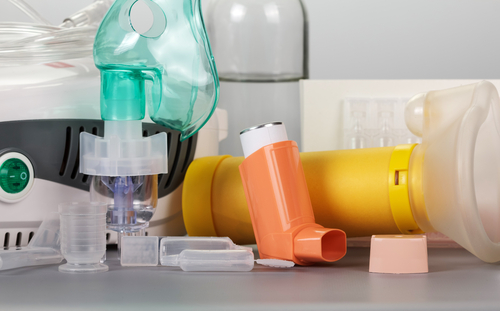Phase 3 Trial Demonstrates Improved Safety Profile of Revefenacin for Moderate to Very Severe COPD

Results of a Phase 3 trial of the investigational drug revefenacin (TD-4208) for the treatment of moderate to very severe chronic obstructive pulmonary disease (COPD) demonstrated the therapy is well tolerated and is associated with a lower incidence of adverse side effects compared to standard of care with Boehringer Ingelheim’s Spiriva (tiotropium).
Developed by Theravance Biopharma and Mylan N.V., revefenacin belongs to the class of long-acting antimuscarinics (LAMA), which improve bronchial muscle contraction capacity and the release of mucus. LAMA compounds, including Spiriva, are commonly used as maintenance therapy for COPD. Revefenacin is a stable compound that was designed to be administrated once-daily via a nebulizer.
“As of today, there are no approved nebulized LAMAs, despite a significant number of COPD patients needing or preferring nebulized therapy for the treatment of their disease,” Brett Haumann, MD, the chief medical officer at Theravance Biopharma, said in a press release.
“Having achieved positive efficacy and tolerability data in our Phase 3 program, we and our partner Mylan believe that revefenacin is well positioned to address this important patient need,” Haumann added.
The 12-month Phase 3 trial (NCT02518139) was designed to compare the safety and tolerability of two doses of revefenacin with standard of care therapy. The study enrolled 1,055 adult COPD patients.
Participants randomly received 88 mcg or 175 mcg of inhaled once-daily revefenacin, or its active comparator Spiriva, administered via a handheld device. About 50 percent of the participants were also receiving other therapies, including long-acting beta-agonists (LABA) or inhaled corticosteroids (ICS).
Overall, the results of the trial demonstrated that revefenacin was less aggressive than Spiriva, as it showed lower rates of adverse effects and serious adverse effects.
Among the most common side effects reported were exacerbations, inflammation of the nasal cavities and pharynx (nasopharyngitis), upper respiratory tract infections, and cough. However, the researchers reported that those treated with the higher dose of revefenacin had lower rates of COPD exacerbation than those receiving Spiriva therapy.
Side effects common to anti-muscarinic activity, such as dry mouth and constipation, were also less frequent in the revefenacin-treated group. The frequency of deaths was similar in the two groups, and an evaluation concluded that these were unrelated to the treatments.
These positive safety results follow previous results from other Phase 3 trials (NCT02512510 and NCT02459080) demonstrating revefenacin’s therapeutic potential to improve the clinical status of COPD patients over placebo.
“The data from this 12-month safety study build on our observations from the previous three-month efficacy studies and suggest that revefenacin has a favorable safety and tolerability profile when dosed chronically, either as a standalone therapy or when taken as an add-on to other COPD therapies including combinations of ICS and LABA,” Haumann said.
The companies expect that these safety and tolerability results may support the submission of a new drug application (NDA) for revefenacin to the U.S. Food and Drug Administration (FDA) by the fourth quarter of 2017.
“We are very pleased with the top-line results from the 12-month safety trial and now feel we have all the data necessary to support a successful NDA filing,” said Rajiv Malik, president of Mylan. “Should revefenacin receive approval from the FDA, we look forward to introducing this nebulized LAMA, to ensure the treatment has the greatest possible impact on the lives of patients with COPD.”






